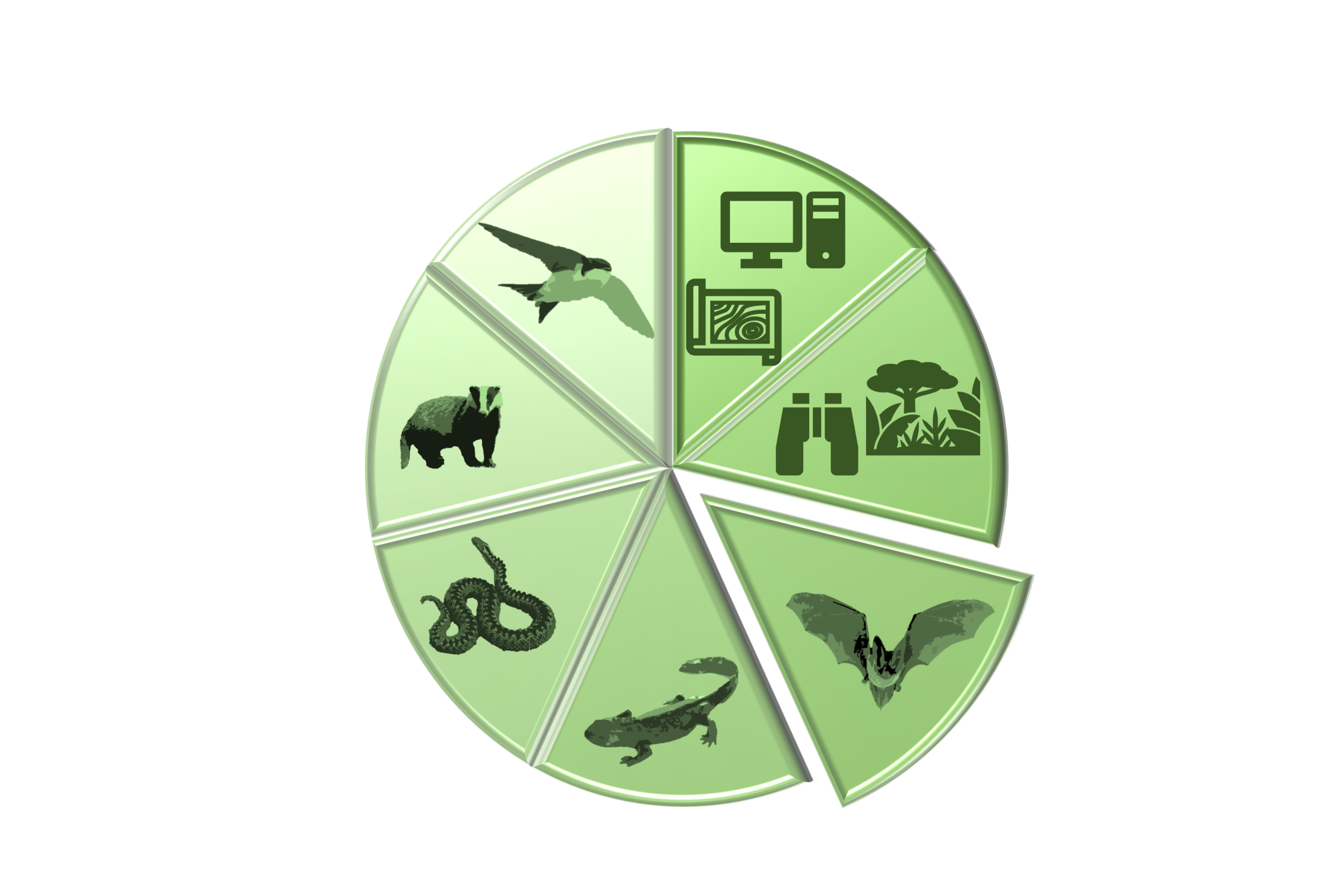Do I need a survey?
Ecological surveys to assess the flora and fauna of a site are an essential part of the planning process in the UK.
Planners need to make informed decisions on the impact a development may make on wildlife. Local Planning Authorities (LPA) will often request a basic survey to identify species and habitats present. This basic survey allows an LPA to decide on the level of impact of a development and whether further surveys are needed for planning purposes.
Ecological Surveys
Survey costs depend on a number of factors: the size of the site, the distance to be travelled, the type of species present, the ecological complexity of the site and the number of surveyors needed (e.g. sites with hazards which pose a risk to surveyors). Good surveys should be tailored to the potential impact of the proposed development and avoid excessive surveying, which wastes time and money. Therefore, please contact me to discuss your specific requirements and provide a bespoke quote.
Desktop Survey
The starting point for all surveys. A desktop survey answers a fundamental question; have any protected species or important habitats been reported at the site or within the surrounding area? In other words, what can we reasonably expect to find? We always recommend a desktop survey in conjunction with a PEA (see below) to be thorough. Desktop surveys start at £250.
Preliminary Ecological Survey (PEA)
PEAs (also known as Phase 1 Habitat Surveys) are often required as a basic stage in a development, big or small. They are a mechanism by which the environmental importance of a site can be measured; types of habitats, their extent and condition, and whether they can potentially support protected species. PEAs and Desktop Surveys are accompanied by a full report of findings and recommendations. I will also comment on the potential environmental impact of the project. Surveys start at £750.
If the Desktop Survey and PEA identify species or habitats of importance or interest, further surveys may be required…
However, many of the specific surveys mentioned below are time sensitive and can only be carried out at, or effective at, certain times of year (e.g. breeding bird survey, reptile surveys, some bat surveys); I will outline time scales for follow-up surveys dependent on the findings of the PEA. In all other cases, I recommend contacting me to discuss your survey requirements.
Bats
All bats in the UK have stringent legal protection which includes their roosts and habitats. The type of bat survey required varies depending on the potential of a site to contain bats and their roosts. The suitability of a site for bats can initially be assessed within the PEA. If you have bats present or potential roosts at your site, it is likely that further surveys will be essential.
Great Crested Newt
Like bats, Great Crested Newts (GCN) receive a level of legal protection greater than other UK species. During a PEA, any waterbodies present at a site or in the surrounding area, will be assessed for the their suitability to contain Great Crested Newts. Further surveys are recommended depending on the findings of the PEA.
Reptiles and Amphibians
Reptiles and amphibians will be surveyed as part of a PEA, but if you require more in-depth research, then please contact me to discuss your needs.
Mammals
As with reptiles and amphibians, the presence of mammals (badgers, otters, water voles etc.) will be covered by a PEA, but please contact me if you have any further requirements.
Bird surveys
Birds will be surveyed as part of a PEA, but a specific breeding bird survey needs to be scheduled between March and June.







